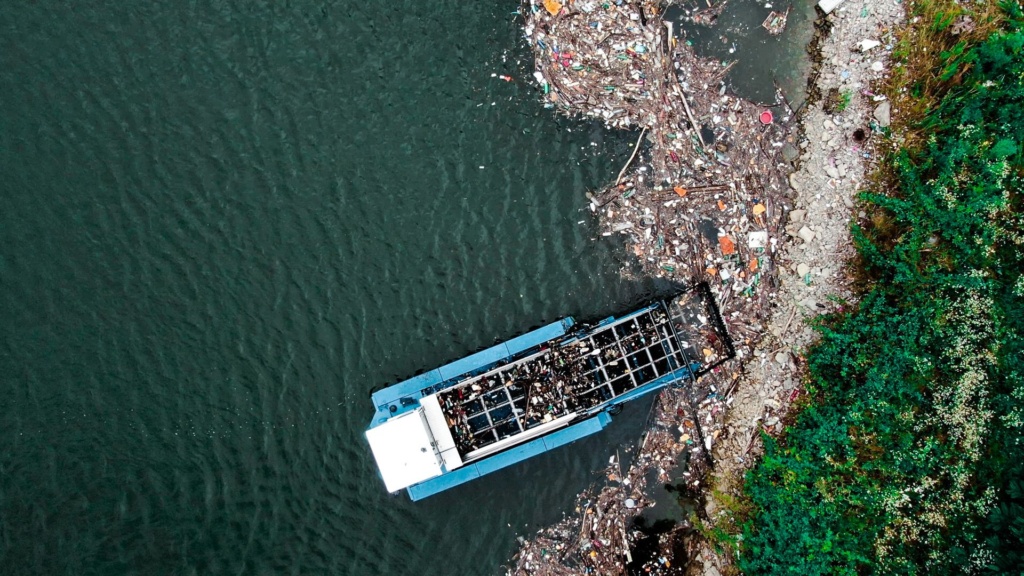In 2018, the Audi Environmental Foundation launched its first cooperation with the non-profit start-up Clear Rivers from Rotterdam. The cooperation focuses on collecting waste from flowing waters as well as raising awareness for environmental damage caused by carelessly discarded litter.
Clear Rivers has developed so-called litter traps which are constructed so that litter riding a current is swept into a net where a retention device prevents it from washing further out. These clever devices prevent plastics from reaching the open sea. Fish and other aquatic life, on the other hand, can dive below the net, so they are not caught. The litter traps are emptied twice a week. Each litter trap prevents an average of one to three cubic meters of waste from reaching the open sea every month.
The first innovative litter trap was set up in the Rotterdam harbor in July 2018. In 2019, additional litter traps were installed in the Brussels-Charleroi Canal and beyond the borders of Europe on the Indonesian island of Ambon. In September 2021, another litter trap was put into service on the Danube in Budapest. “We are also looking at other rivers for suitable sites. It is important, for example, that our litter traps are set up at a strategic location where they do not impede shipping traffic while simultaneously maximizing their litter yield,” says Ramon Knoester, Founder of Clear Rivers.
The collected litter is recycled by the Audi Environmental Foundation and Clear Rivers to smart ends. Various technologies – including pressing, welding, and 3D printing – are employed to turn the recycled plastic waste into floating parks. These consist of several hexagonal islands, each five square meters in size and connected to each other. Some will feature benches made of recycled plastic, while others will be planted with moss, shrubs or even trees.
The islands will serve visitors to the harbor as well as residents as recreational areas, but above all will be a refuge for animal life. The individual island components are of various heights and feature an open substructure to allow small residents of the river to swim in and out easily, for example to spawn in the protection of the park’s subaquatic root system.



